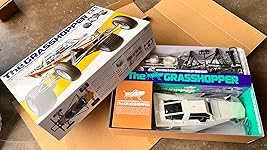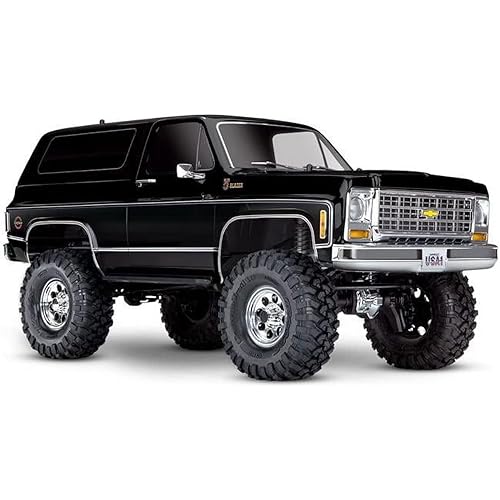






Buy Now, Pay Later
- – 6-month term
- – No impact on credit
- – Instant approval decision
- – Secure and straightforward checkout
Ready to go? Add this product to your cart and select a plan during checkout.
Payment plans are offered through our trusted finance partners Klarna, Affirm, Afterpay, Apple Pay, and PayTomorrow. No-credit-needed leasing options through Acima may also be available at checkout.
Learn more about financing & leasing here.
FREE refund/replacement until Jan 31, 2026 Learn more
To qualify for a full refund, items must be returned in their original, unused condition. If an item is returned in a used, damaged, or materially different state, you may be granted a partial refund.
To initiate a return, please visit our Returns Center.
View our full returns policy here.
Recently Viewed
Features
- The leader in hobby products around the world
- Made using the highest quality components and materials
- Test for durabitlity and safety
- Construction type : assembly kit
- Terrain use : off-road; Drive-train : 2WD RWD
- 380 type motor (chassis compatible with 540 type motor - sold separately)
- Requires A : 7.2 battery & chargerRequires B : 2-channel radio gearRequires C : TS plastic model paint
- Independent swing axle front suspension, rolling rigid axle rear suspension
Description
Tamiya ventured into the modeling business in 1948, with a scale wooden ship model kit. Since then, Tamiya has been striving to offer merchandise that can truly be called "First in Quality Around the World." Now Tamiya is offering more than 300 different products, both in the fields of precision static models and high performance radio control vehicles. These products are not only sold in Japan but also exported in vast quantities to the United States, Europe, South East Asia, and to many other parts of the world. The standard of excellence achieved by Tamiya is regarded as among the very finest in the world of model hobbies. From the Manufacturer Based on 1-seater buggies seen tearing-up dirt tracks across the U.S. in the 80's, the Grasshopper first made its appearance in R/C stores in 1984. Boasting easy assembly and easy control, the lightweight Grasshopper proved an instant hit as the perfect entry level R/C kit. Also compatible with a whole range of option parts such as 540 motor and ball bearings, the Grasshopper was an entry level car that could keep up with the owners driving experience. Packed with all the fantastic features of the original kit, this fun 2WD buggy is a blast on both off-road and on-road tracks. Whether it was your first or will be your first, the Grasshopper guarantees to please. Simple But Tough 2WD Chassis The perfect combination of simple assembly and tough exterior is what made the Grasshopper so special. Durable plastic body is fastened to bathtub resin monocoque chassis by screws, creating a solid frame that can absorb any type of rough handling. Off-road tracks can be tackled with ease thanks to coil spring dampers and independent swing axle front and rigid axle rear suspension. Diff loaded sealed gearbox keeps out the dirt and stones for smooth driving and cornering. Paddle style rear tires and grooved front tires combine with 3-piece assembly type wheels for excellent grip performance on dirt tracks. Half-body driver figure adds that finishing touch to a fun off- road R/C car.
Product Dimensions: 15.3 x 8.77 x 5.3 inches
Item Weight: 2 pounds
Item model number: TAM58346
Manufacturer recommended age: 0 - 3 years
Batteries: 1 Product Specific batteries required.
Is Discontinued By Manufacturer: No
Manufacturer: HRP (Level 3 Products)
Date First Available: February 23, 2007
Frequently asked questions
To initiate a return, please visit our Returns Center.
View our full returns policy here.
- Klarna Financing
- Affirm Pay in 4
- Affirm Financing
- Afterpay Financing
- PayTomorrow Financing
- Financing through Apple Pay
Learn more about financing & leasing here.
Similar Products
Top Amazon Reviews
























